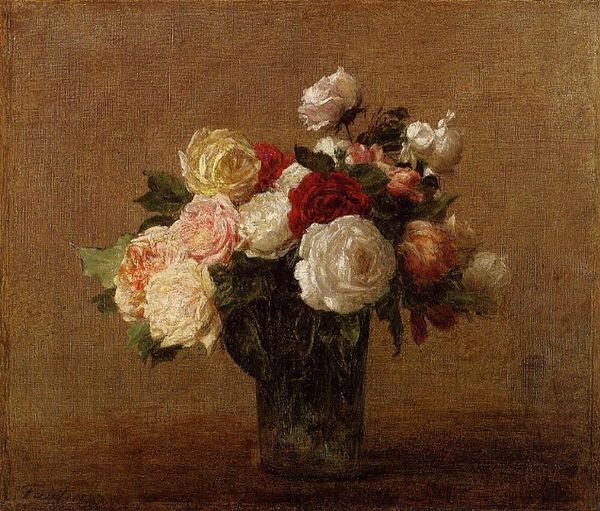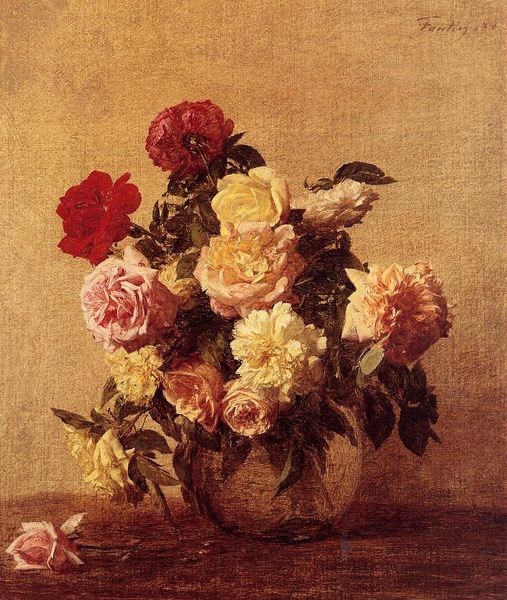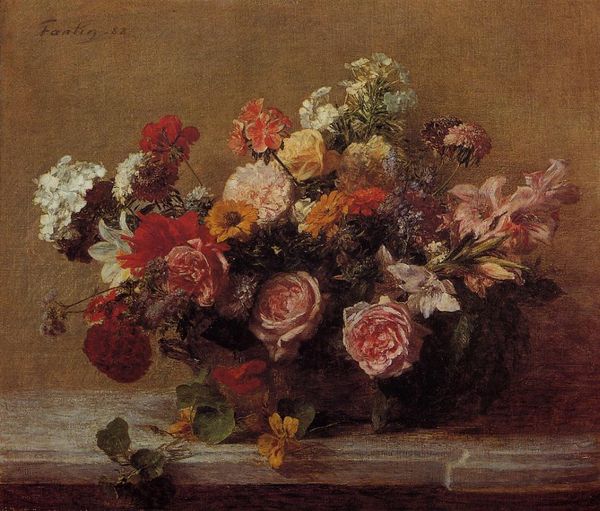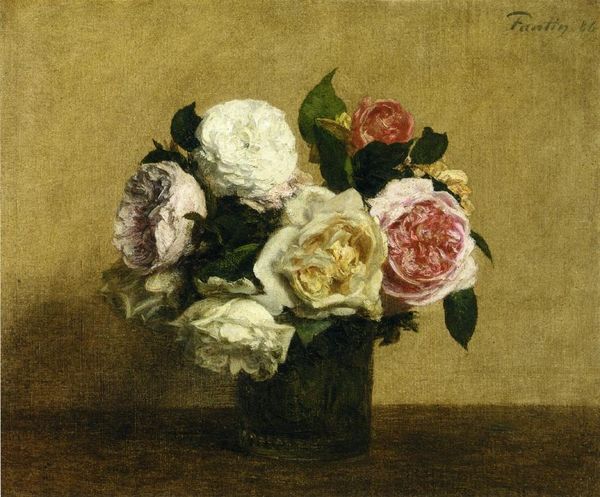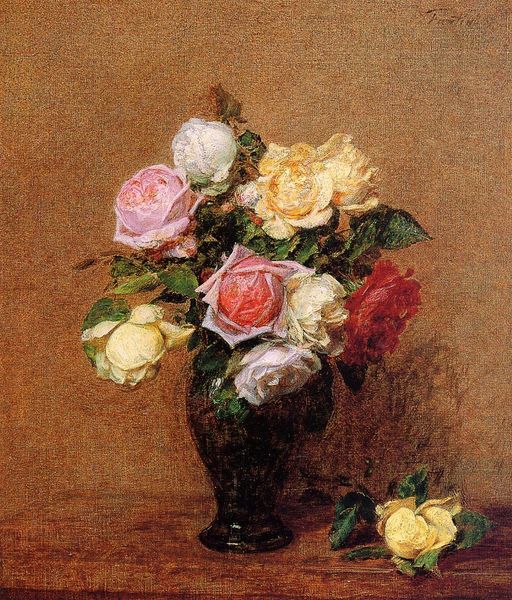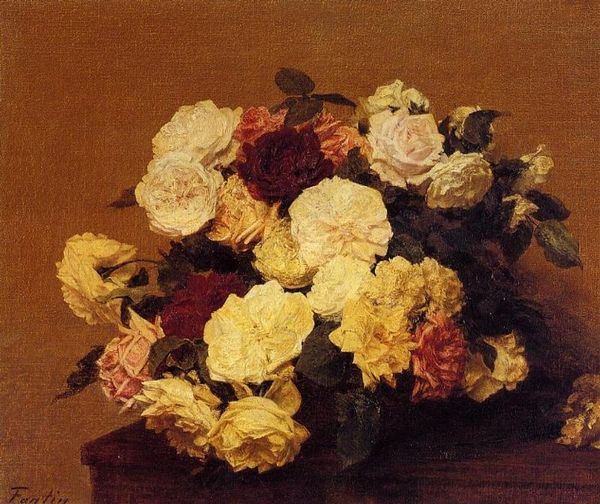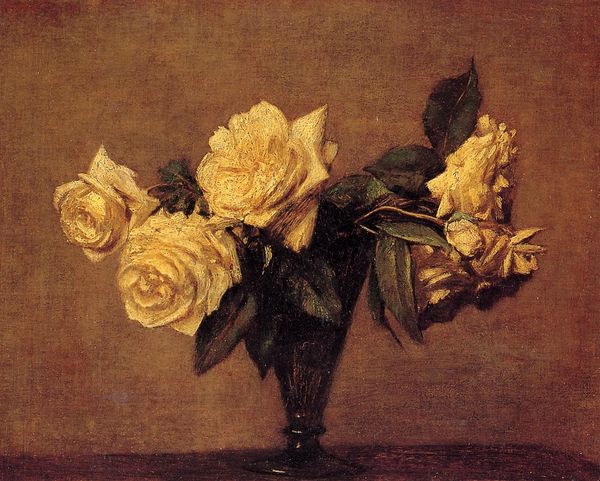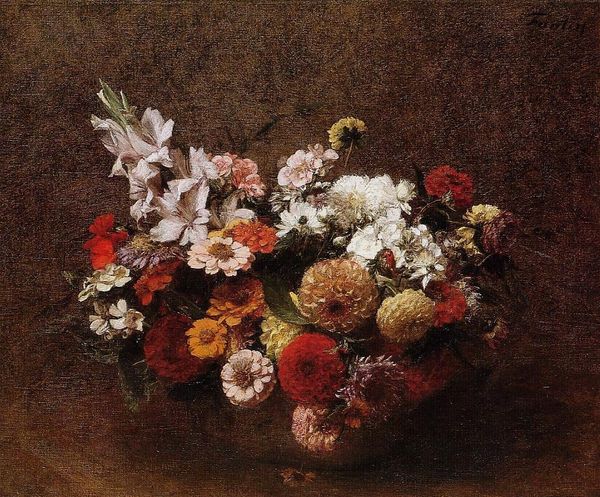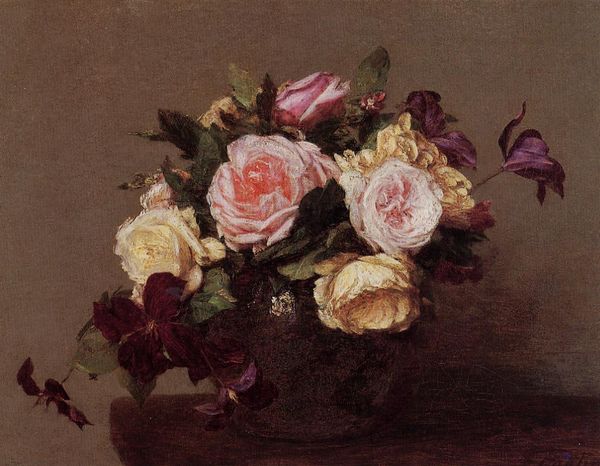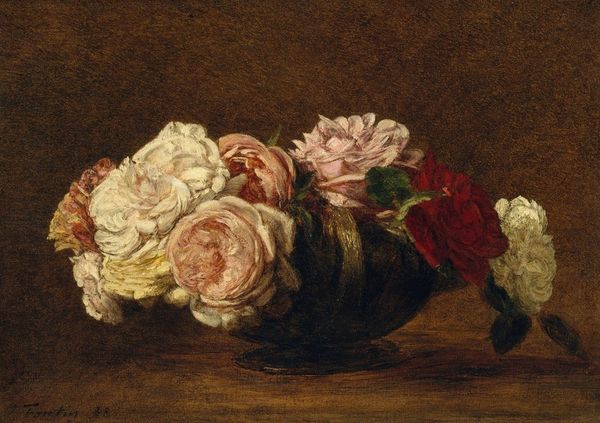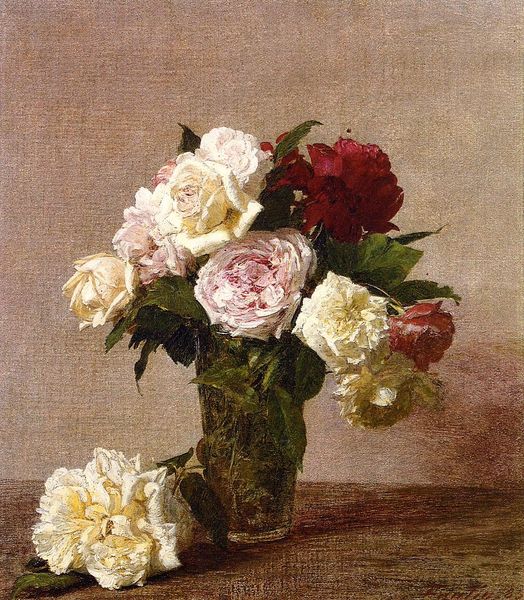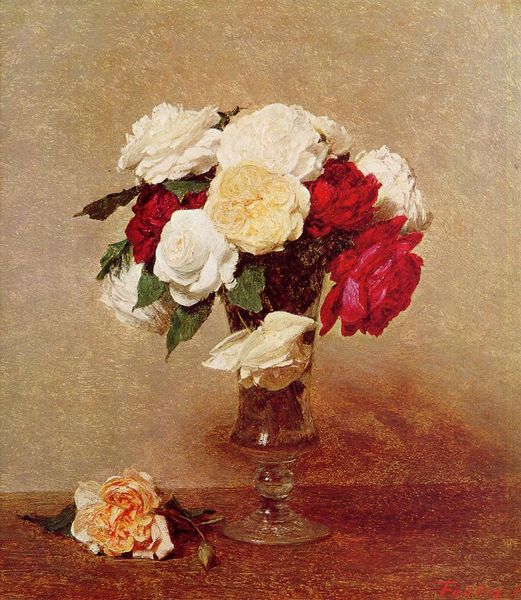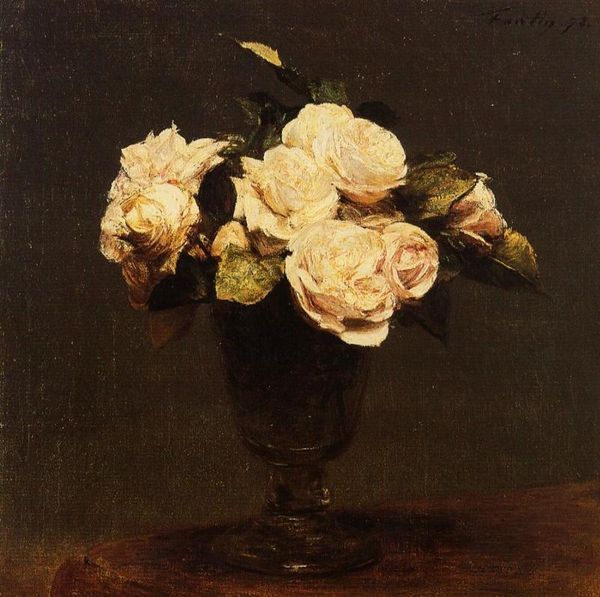
Copyright: Public domain
Curator: Looking at Fantin-Latour’s "Flowers in a Vase," painted in 1881, I'm struck by the interplay of light and shadow. It feels very grounded, a sense of bourgeois domesticity captured on canvas. Editor: Immediately, I feel this tension. These aren’t wild, uncultivated flowers. Their arrangement feels deliberate, almost a posed portrait meant to display wealth, gender roles, and perhaps, constraints. Curator: It's certainly true that flower painting was a respected genre during the 19th century, often tied to ideas of femininity and domestic life. But Fantin-Latour elevated the genre through his commitment to realism and his study of Dutch Masters, which lent these pieces some art-historical respectability in museums and galleries. Editor: Right, but whose gaze are we accommodating in this carefully arranged vase? Does the "academic art" Fantin-Latour was producing serve as a mere aesthetic pleasure, or are there broader narratives woven into his choice of subject? For whom were these flowers a delight, and at what social cost? Curator: He presented floral beauty with an unprecedented eye, studying botany manuals and greenhouses for accuracy and truthfulness. His impasto technique really conveys the weight of each bloom and brings texture into this very realistic picture. Editor: Perhaps. But I still wonder about accessibility. These exquisite, probably costly flowers contrast with the social realities faced by the working classes of the time, when inequality kept real, material joys beyond reach. What did flowers represent beyond pure loveliness to an industrialized nation struggling for basic human rights? Curator: Your reading prompts further contemplation about the function of these kinds of artworks. What political purposes do still lifes support, or challenge? It is all food for thought, particularly as museum settings further contextualize these art works. Editor: Absolutely. And now that this canvas lives within museum walls, our interpretation of it lives and evolves in turn. What an amazing lens this work presents to view art history.
Comments
No comments
Be the first to comment and join the conversation on the ultimate creative platform.
